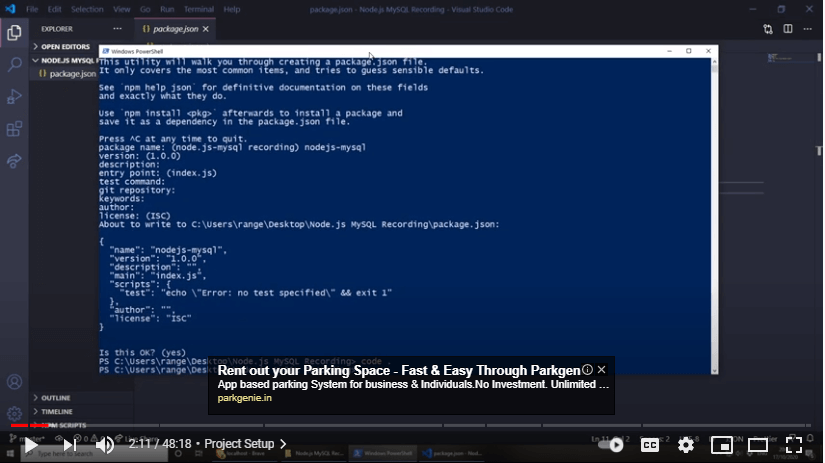
The mysql.createConnection() method is used to interface with the MySQL server.

#Nodejs mysql code#
Use the following code to connect and load the data by using CREATE TABLE and INSERT INTO SQL statements.
#Nodejs mysql full#
#Nodejs mysql password#
Replace host, user, password and database config options in the code with the values that you specified when you created the MySQL flexible server and database.js (such as C:\nodejsmysql\createtable.js or /home/username/nodejsmysql/createtable.js). Paste the JavaScript code into new text files, and then save it into a project folder with file extension.If you forget your password, you can also reset the password from this panel. From the server's Overview panel, make a note of the Server name and Server admin login name.From the left-hand menu in Azure portal, select All resources, and then search for the server you have created (such as mydemoserver).You need the fully qualified server name and sign in credentials. Get the connection information needed to connect to the Azure Database for MySQL - Flexible Server. Visit the Node.js downloads page, and then select your macOS installer.
#Nodejs mysql install#
Run the following commands to install Node.js and npm the package manager for Node.js. RHEL/CentOS 8.x sudo yum install -y nodejs RHEL/CentOS 7.x sudo yum install -y rh-nodejs8 The version number may vary as new patches are released. Verify the installation by checking npm list output text. Run the following commands to create a project folder mysqlnodejs and install the mysql package into that folder. Verify the installation by checking the npm list output text.

"C:\Program Files\nodejs\npm" install mysql Run the NPM tool to install the mysql library into the project folder. Open the command prompt, and then change directory into the project folder, such as cd c:\nodejsmysql\ Make a local project folder such as nodejsmysql. This might become much more complicated when using more complex queries.Īn alternative might be to use an ORM like TypeORM for example.Visit the Node.js downloads page, and then select your desired Windows installer option. On the other hand, your have some overhead because you have to define the TypeScript interfaces according to your database tables. One benefit of using this technique is that IDEs and editors like VSC suggest the table colums of the query results via IntelliSense now when working with them. The method remove() returns the number of affected rows, which should be 1 if everything worked fine. The methods create() and update() return the user that was just created / updated by reading the res.insertId / user.id value. Notice that the readById() method returns a single instance of IUser by using the optional chaining (?.) operator. Import ) construct we return the result as Promise and not as callback.


 0 kommentar(er)
0 kommentar(er)
